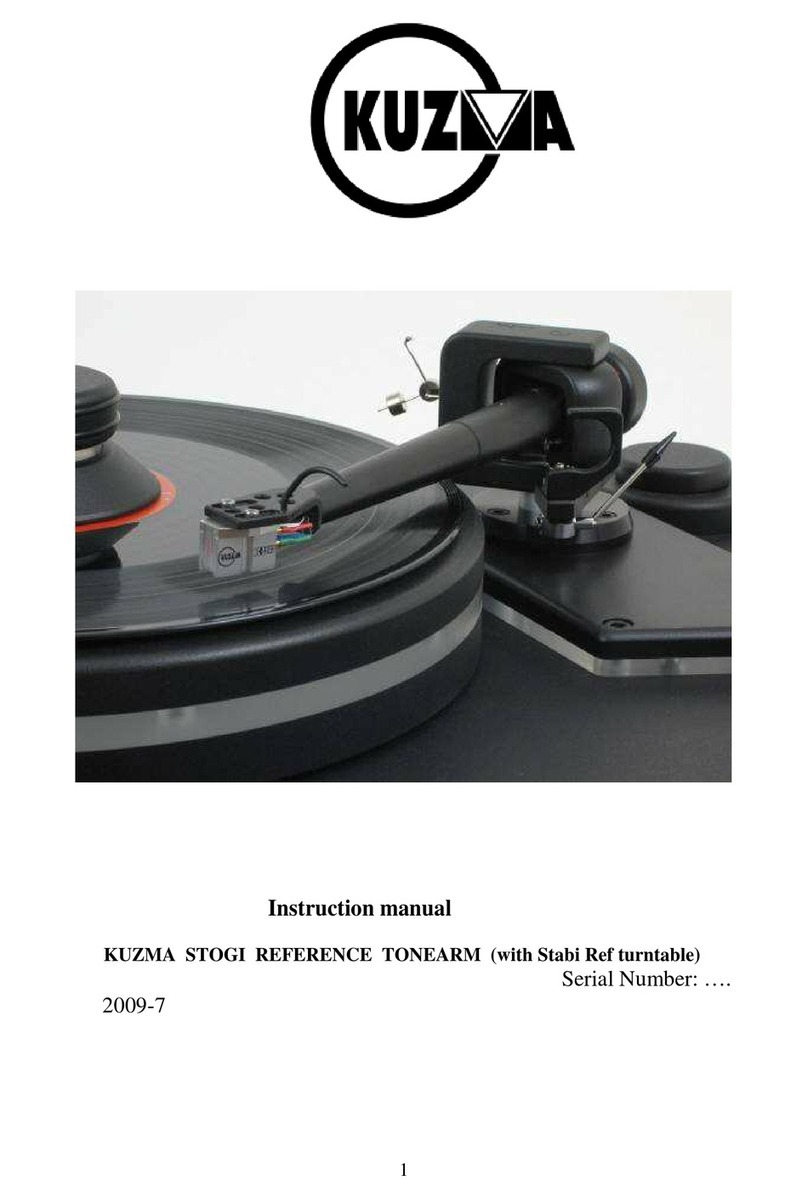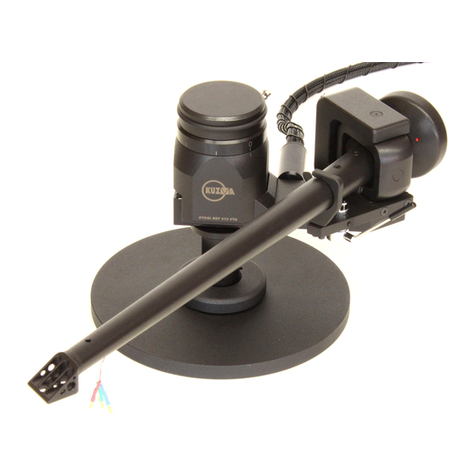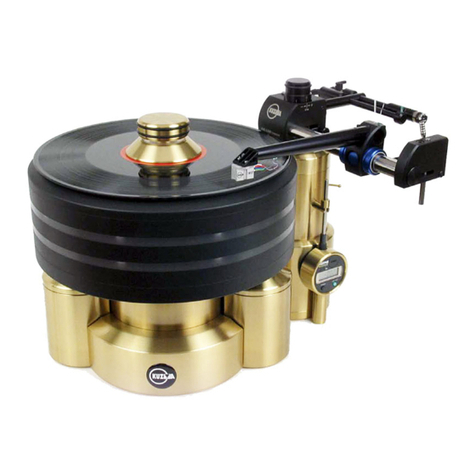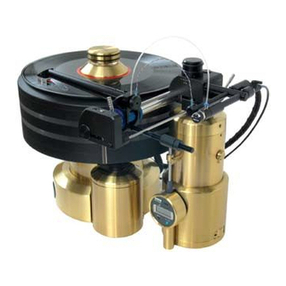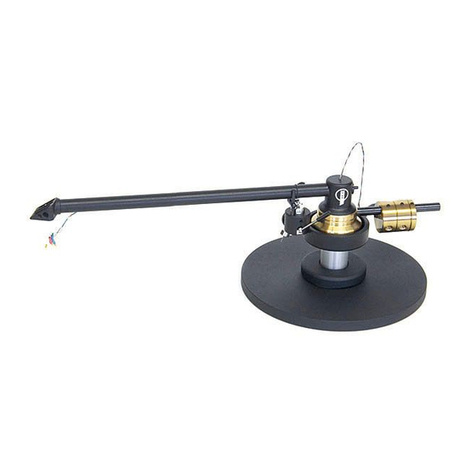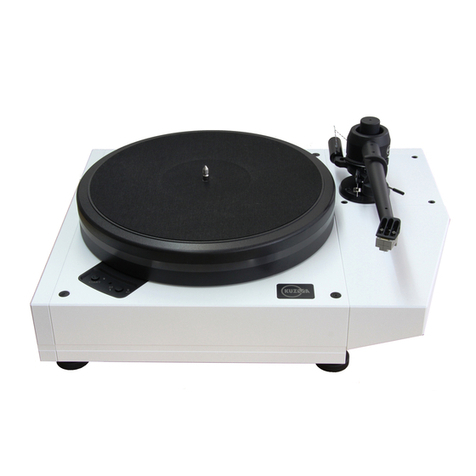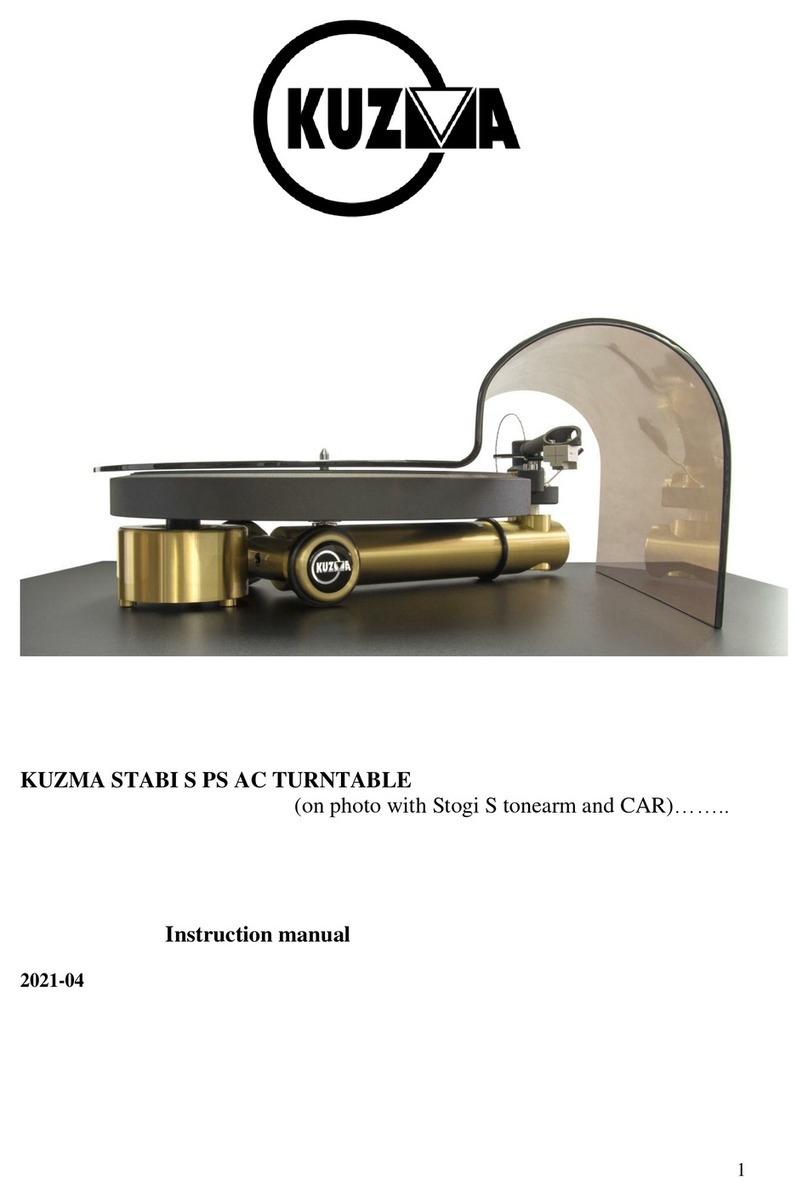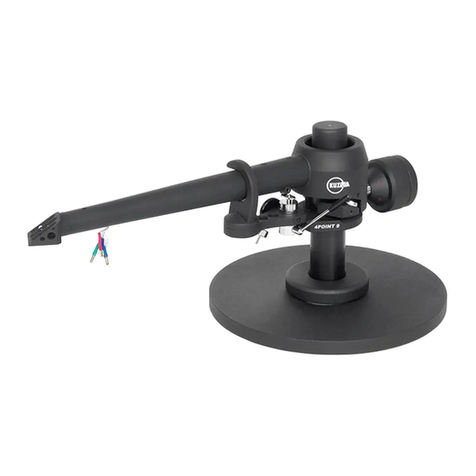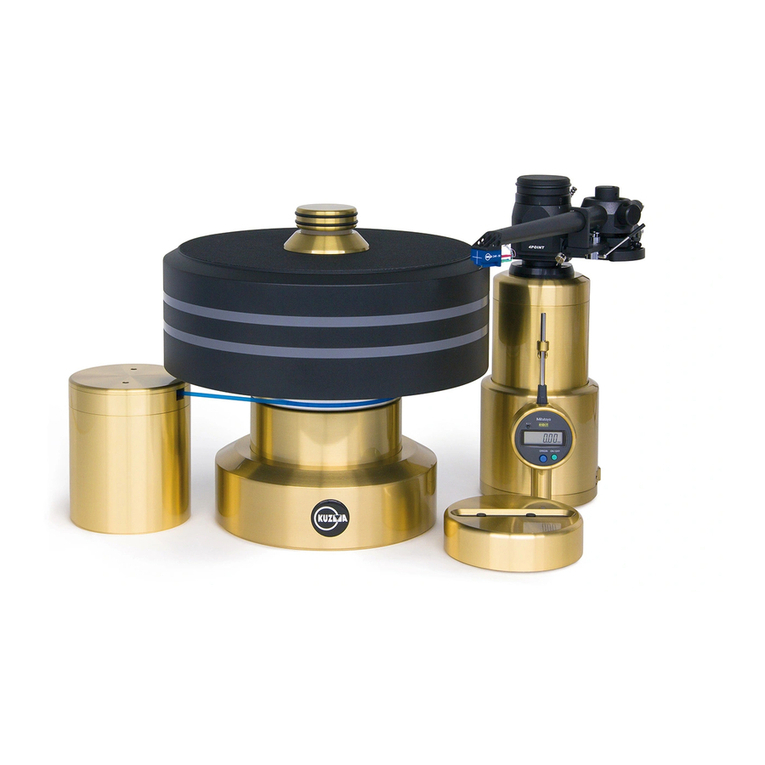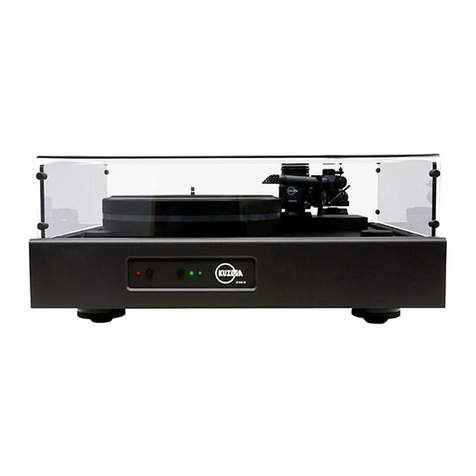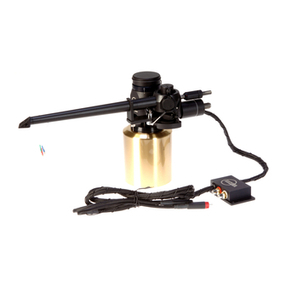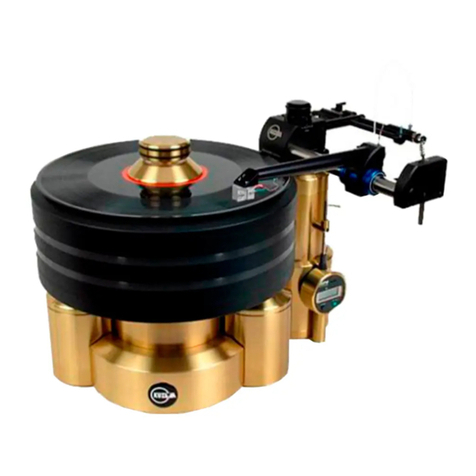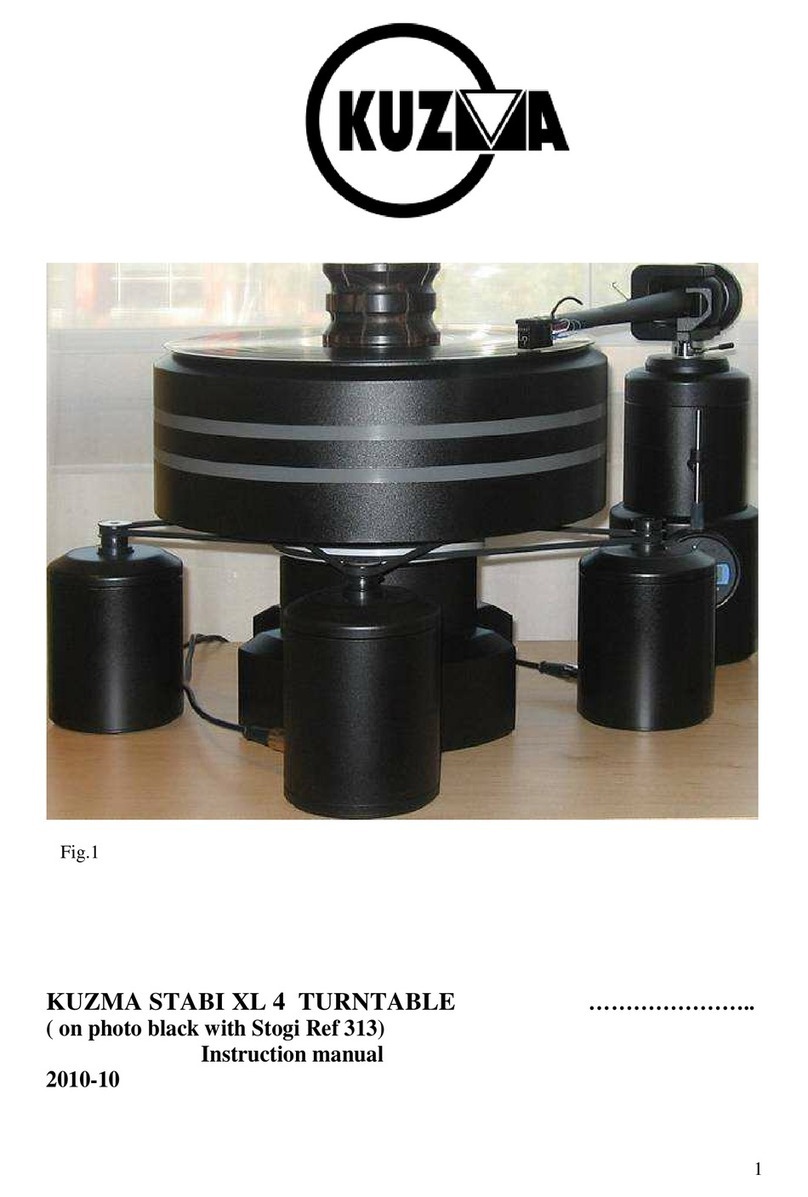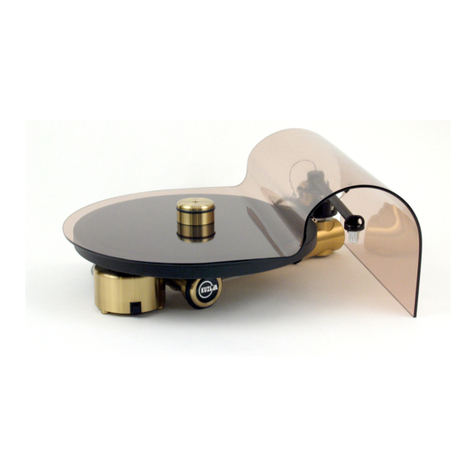Basic setup:
Note: Carefully unpack parts which are in protective plastic bags.
Note: When assembling the motor tower and platter, ensure that the platter will not touch or
damage the motor pulley! Check the distance of the motor tower from the T base.
Note: While the parts are packed in plastic bags for protection, these are not intended to be
strong enough to lift or carry the parts.
Note: Allow space above Power supply for ventilation, of at least 10-20 mm.
Lid:
If the turntable is supplied with a wooden platform, remove this and place in position. The
rounded part should be on the left. Locate the three small holes which correspond to the
intended position of the three black rubber rings on the main T base. If the turntable is
supplied with Stogi S tonearm remove it in its box.
Unpack lid and put it aside.
T base:
Remove the foam and lift the main T base ( fig. 3) of turntable carefully as it is heavy and
put it on a shelf so that the side with the bearing is situated at 8 o' clock and the side with the
tonearm mount at 2' o clock. See fig 6.
Position T base + motor tower Fig 6.
Motor tower:
Lift the motor tower with the connected 5pin DIN cable, being careful not to touch the black
motor pulley. Position it in the 8 'o clock position in the middle of the shorter length of the
T base. See fig.6. Turn the motor tower so that the mains switch faces forwards- this switch
is not functional when motor is supplied with PS or is omitted. The distance between the
motor tower and T base should be approximately 10 mm.
The motor tower distance affects the speed very little. A difference of a few mm, keeps the
speed tolerances below 0.1%.
Bearing oil:
From the oil bottle, fill the bearing hole on the T base with 25 drops from the oil bottle.
5
